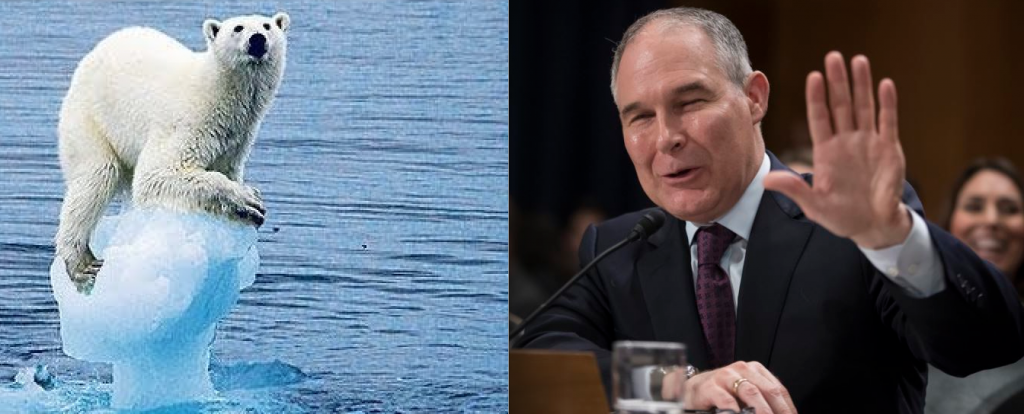Study: 10 Yrs. to Stop Climate Damage or Else! (as Pruitt Calls for U.S. to ‘Exit’ Paris Accord)

(EnviroNews USA Headline News Desk) — Humanity has about a decade to reduce carbon emissions and meet the climate goals set by the monumental Paris Agreement (Paris accord) of 2016, according to an International Institute for Applied Systems Analysis (IIASA) study called, Pathways for balancing CO2 emissions and sinks.
The study’s urgent recommendations are in stark contrast with the mindset of Trump’s Environmental Protection Agency (EPA) Administrator Scott Pruitt, who on April 13, called for a complete “exit” from the historic Paris Agreement, calling it “a bad deal for America.”
The Austrian study, published in the journal Nature Communications in February 2017, analyzes the release and uptake of carbon through both natural and anthropogenic (human-caused) sources. “The study shows that the combined energy and land-use system should deliver zero net anthropogenic emissions well before 2040 in order to assure the attainability of a 1.5°C target by 2100,” IIASA Ecosystem Services and Management Program Director and co-author Michael Obersteiner explained in an April press release.
The 1.5°C target he refers to is the secondary goal of the Paris accord, which has a primary goal of keeping the rise in global temperature to below 2°C. The plan entered into force in 2016 and was adopted by 194 countries, including the United States, all of which were allowed to pursue their own methods of fulfilling the agreement.
The U.S., which is the world’s second largest contributor of greenhouse gases after China, committed to reduce emissions by between 26 and 28 percent, below 2005 levels by 2025, Inside Climate News reports. While President Trump has previously expressed his intention to “cancel” the Paris accord, both Secretary of State Rex Tillerson and even several U.S. coal companies have urged the President to uphold the international compact.
The recent climate analysis recommends a reduction in global fossil fuel consumption from 95 percent to less than 25 percent by 2100. The report also takes carbon uptake by plants, oceans and soil into account and calls for a decrease in deforestation. These efforts would result in a 42 percent decrease in emissions by the end of the century, the press release explains.
The authors present their findings through four potential future energy scenarios. In the “high-renewable” scenario, solar, wind, and bioenergy increase by about 5 percent annually and emissions could then peak by 2022. But even in this scenario, substantive negative emissions technologies would have to be utilized to meet the Paris Agreement target. These proposed negative emissions processes include methods like sucking carbon out of the air to bury it or re-use it in fuel or other products, or geoengineering techniques such as altering the chemical make-up of clouds and oceans to increase their CO2 absorption.
If renewable energy only continues to grow at the current approximate rates of between 2 percent and 3 percent annually, the researchers estimate a 3.5°C global temperature rise by 2100. High-energy and low-energy consumption ranges are also factored into the study’s findings and scenarios. The authors used a novel approach called the FeliX Model, which Obersteiner describes as “less detailed” but providing “a unique systemic view of the whole carbon cycle.”
IIASA Energy Program Director Keywan Riahi, who also contributed to these findings, explained this new work adds to IIASA’s already extensive body of research on climate mitigation policy, which has “shown the importance of demand-side measures, including efficiency, conservation and behavioral change.”
FILM AND ARTICLE CREDITS
- Julia Travers - Journalist, Author



